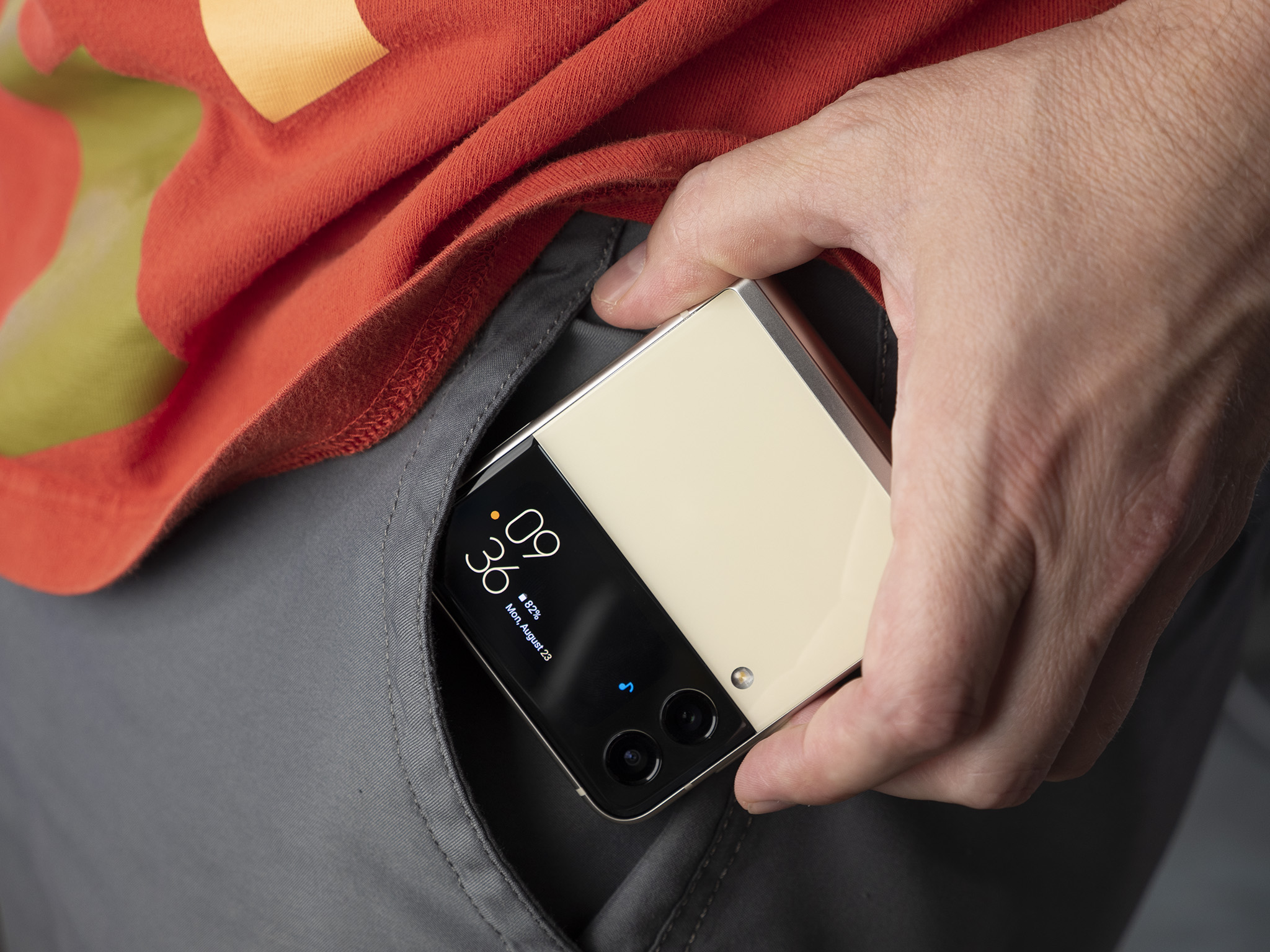Android Central Verdict
The Galaxy Z Flip 3 is the first foldable that makes sense to recommend to most people. It's not just the price that's better this time around, either. Water resistance, fantastic screen protectors build-in, a uniquely durable design, great performance and battery life, and reliable cameras mean you'll enjoy every day with the Flip 3, even if there are some improvements Samsung could make next year.
Pros
- +
No-compromise performance
- +
Great cameras
- +
Bespoke software features
- +
Gorgeous and useful design
- +
Water, scratch, and drop-resistant
Cons
- -
No telephoto camera lens
- -
Cover display has limited functionality
- -
Likes to slide off uneven surfaces
- -
15W charging can be slow
Why you can trust Android Central
Turns out, the third time really is a charm when it comes to Samsung's foldable clamshell design. What may have initially seemed to be an homage to a relic of another time is actually the ideal form factor for the devices we have come to love and use every single day.
Samsung is making sure that the idea of flip phones isn't just relegated to a few overly nostalgic, wealthy customers either, as it has dropped the MSRP to $999 and is even trying to woo younger demographics with attractive accessories that make the Galaxy Z Flip 3 hip to be square.
But it's not just the style that Samsung is nailing down for its third-generation clamshell foldable. Important features that people have come to expect from a modern smartphone are finally available on foldables like the Galaxy Z Flip 3 and the Galaxy Z Fold 3. That includes major milestones like water resistance, stereo speakers, a screen that doesn't scratch easily, and more durable materials than ever that are all necessary for more mass-market adoption.
The Samsung Galaxy Z Flip 3 is an amazing experience from the first unfolding of the day to the last snap closed before bedtime. It's an oddly cathartic experience that phone users have forgotten in the age of black mirrors that all look and operate nearly identically. It's also a much more straightforward design than the Fold 3 since it doesn't change the way you'll use the phone when it's open — only in the times when the phone is closed or somewhere in between those two states. It took me no time at all to fall in love with the phone and, as our Galaxy Z Flip 3 review unfolds, I think you'll quickly understand why.
Galaxy Z Flip 3: Price and availability
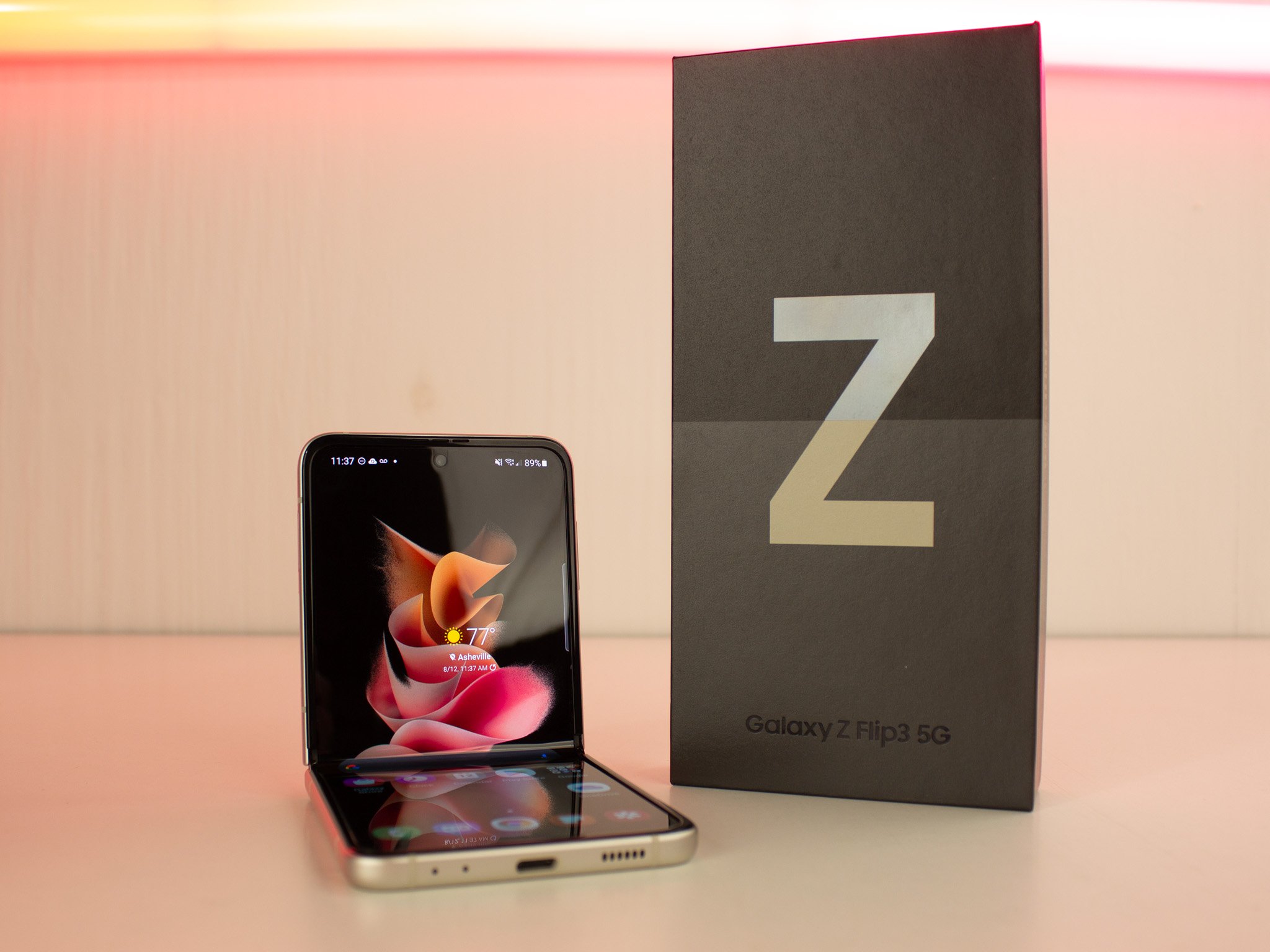
The Samsung Galaxy Z Flip 3 made its debut in early August and is available from August 27 at all major retailers, carriers, and at Samsung.com. Samsung's retail price for the phone is $999, making it the first major foldable to achieve a sub-$1,000 price point. The best Galaxy Z Flip 3 deals make it easy to get the phone for only a few hundred dollars though, especially if you score a deal with your carrier of choice or have other phones to trade in to Samsung.
If you're feeling extra fancy, Samsung now offers the Galaxy Z Flip 3 Bespoke Edition, which is a customizable version of the phone that you can personalize in a way other phones simply don't offer. The Bespoke Edition lets you customize the front panel and back panel from a choice of about half a dozen different colors. The frame, too, can be customized with a choice of one of two colors.
Samsung has created a wide variety of fascinating Z Flip 3 cases that won't just keep your new Flip protected, but make it look even better than that out-of-the-box style. That's great because, unfortunately, almost nothing comes in the box alongside the phone, continuing the trend of offering little other than the phone with a purchase. In total, you'll find the phone, a USB-C cable, and some manuals in the small box.
Get the latest news from Android Central, your trusted companion in the world of Android
Galaxy Z Flip 3: Hardware and design
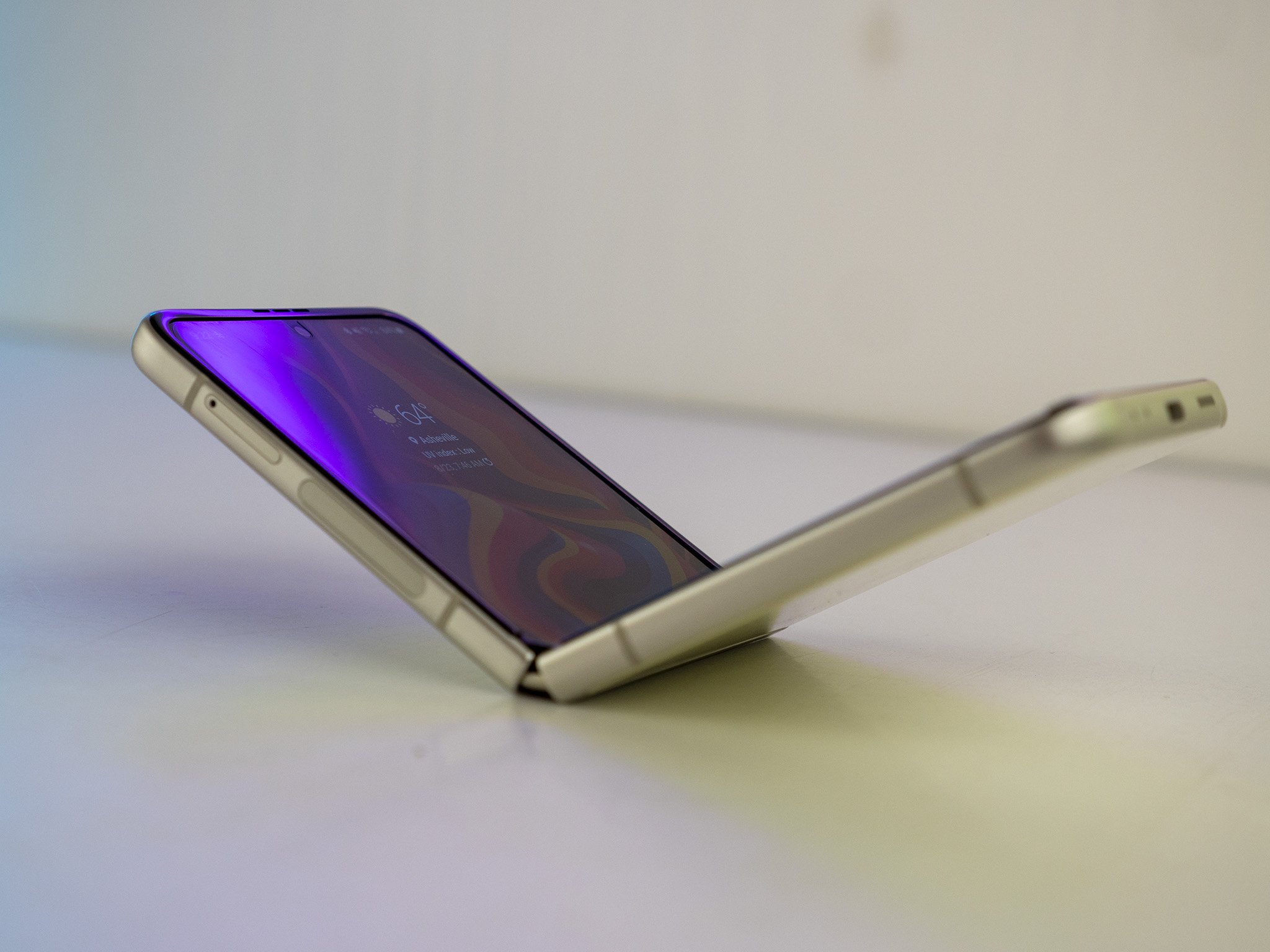
| Category | Samsung Galaxy Z Flip 3 5G |
|---|---|
| Operating System | Android 11, One UI 3.1.1 |
| Cover Display | 1.9 inches, 260x512 (302 ppi) resolution, AMOLED |
| Inner Display | 6.7 inches, 22:9, 2640x1080 (425 ppi) resolution, Dynamic AMOLED 2X, 120Hz refresh rate |
| Chipset | Snapdragon 888 |
| Memory | 8GB |
| Storage | 128GB or 256GB |
| Expandable Storage | No |
| Rear Camera | 12MP, ƒ/1.8, 1.4μm (wide-angle) 12MP, ƒ/2.2, 1.12μm (ultra-wide) |
| Inside Camera | 10MP, ƒ/2.4, 1.22μm |
| Security | Side-mounted fingerprint sensor |
| Battery | 3300mAh 15W Fast Charging 10W Wireless Charging 4.5W Reverse Wireless Charging |
| Dimensions | 86.4 x 72.2 x 17.1mm (folded) 166 x 72.2 x 6.9mm (unfolded) |
| Weight | 183g |
| Water and dust resistance | IPX8 |
| Colors | Phantom Black, Cream, Green, Lavender, Gray, White, Pink |
I'd be remiss not to begin with describing just how much I've missed flip phones. I began my cell phone journey back in high school with a brick of a Nextel-branded Motorola, but I've never gotten over just how great closing the lid can feel. Likewise, Android began with a phone that also featured a physically hinged keyboard but, somewhere along the way, the industry lost the plot.
Flipping the phone open and closed feels sublime in a way a standard slate-style smartphone simply can't hope to achieve, even if you buy a case with a cover that closes. Having the hinge built into the phone is paramount to the experience, and it's one that's sure to turn heads no matter where you go. It's also amazing just how pocketable a flip phone is; a stark contrast from most modern phones that are too tall to fit in some pockets.
If you can believe it, that smaller, unique form factor means you won't have to give up flagship-level specs. It's got the same top-tier Snapdragon 888 processor and amazing 120Hz display as the Galaxy S21, significantly enhanced brightness levels over the Z Flip 5G, and great cameras — even if they're not the very best you'll find on a Samsung phone.
The Galaxy Z Flip 3 exudes a level of chic design that foldables of the past could never pull off. Samsung went with a dual-tone look for all seven colorways — a choice that further enhances the exemplary design — that helps to highlight one of the biggest physical changes between this year's model and the last: the cover display.
Last year's Galaxy Z Flip 5G had what could barely pass as a screen on the front — which was no bigger than a fingernail — but the Flip 3 quadruples the size of that screen to make it far more useful. Still, this display is too small to perform regular tasks like replying to messages or using apps.
Despite the unique form factor, Samsung packed in the best processor, 120Hz display, and water-resistance that you'll find in its other flagships.
While the cover display is only a partial improvement over the Z Flip 5G's cover display, the hinge is a 100 percent improvement across the board. Like the Z Fold 3, the Z Flip 3's hinge is tight enough to be useful at any angle when placed on a surface.
That means it's easy to fold the phone at any angle between roughly 30 and 150-degrees and set it on a surface for use. More acute angles are best for taking pictures from weird angles, while obtuse angles are likely better for video calls or certain types of multitasking. While the phone is difficult to pick up from a table or other surface when it's open flat, having the phone all the way closed or in Flex Mode makes that common task substantially easier.
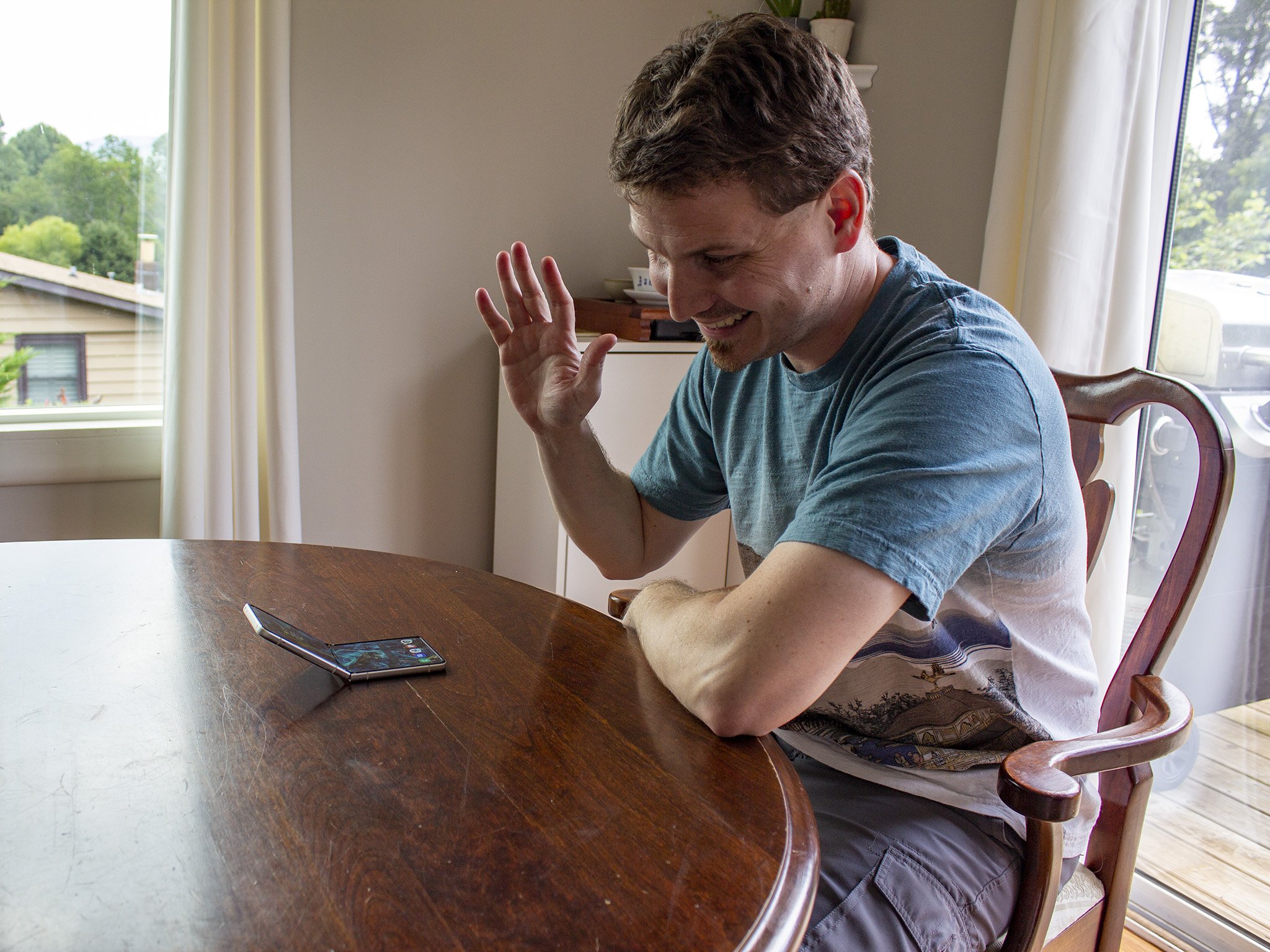
The metal frame of the Z Flip 3 feels rock-solid yet, thanks to the Armor Aluminum, surprisingly light, especially when compared to the inordinately heavy Z Fold 3. 183g makes it just a tiny bit heavier than a Galaxy S21 and far lighter than a Galaxy S21 Ultra. The hinge is sturdy and doesn't creak or wobble at all, further helping to solidify the well-built nature of the Flip 3.
Gorilla Glass Victus is the real deal. After 2 weeks of use, I don't have a single scratch anywhere on the phone.
The Z Flip 3 also includes Gorilla Glass Victus everywhere there's a shiny surface. While I've scoffed at the "improvements" made to Gorilla Glass over the years, Victus is the real deal. I've been using this phone without a case for two weeks now and it doesn't have a single scratch on it. That even includes the new PET (polyethylene terephthalate) screen protector on the larger inside display, which both feels identical to glass and doesn't scratch easily at all. That's great since repairs aren't cheap and you likely won't want to be scratching it up or breaking it, if you can help it.
As a folding phone, the display itself has to fold inward so as not to break. That might be an obvious physics fact when you think about it, but it also creates an obvious horizontal crease right in the middle of the display. There's no getting around it: the crease is noticeable and could very well drive some people crazy, either by looking at it or by rubbing their finger over it while scrolling on social media. Personally, the crease doesn't bother me and isn't particularly visible when looking at the device straight on, but it's a tidbit of info that you'll need to know before jumping in.
On top of general durability improvements with the metal and glass portion of the phone, the Z Flip 3 is finally water-resistant with an IPX8 rating. That means you can take it to the pool and snap some great pics or get super super-mo diving videos without having to worry about ruining your foldable, unlike all previous foldable generations. Just don't take it to the beach, because there's no dust ingress protection, meaning you could irrevocably damage the hinge.
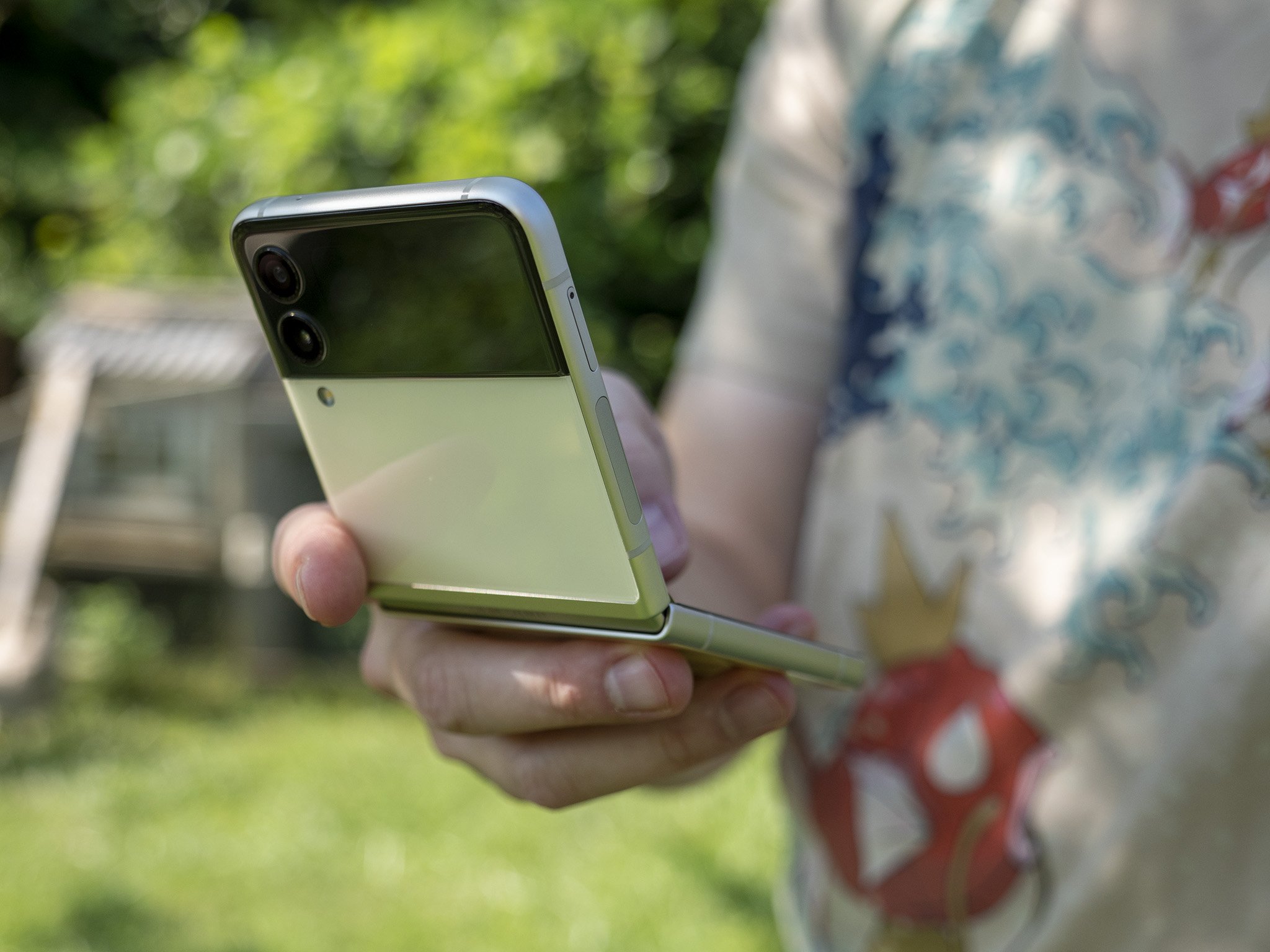
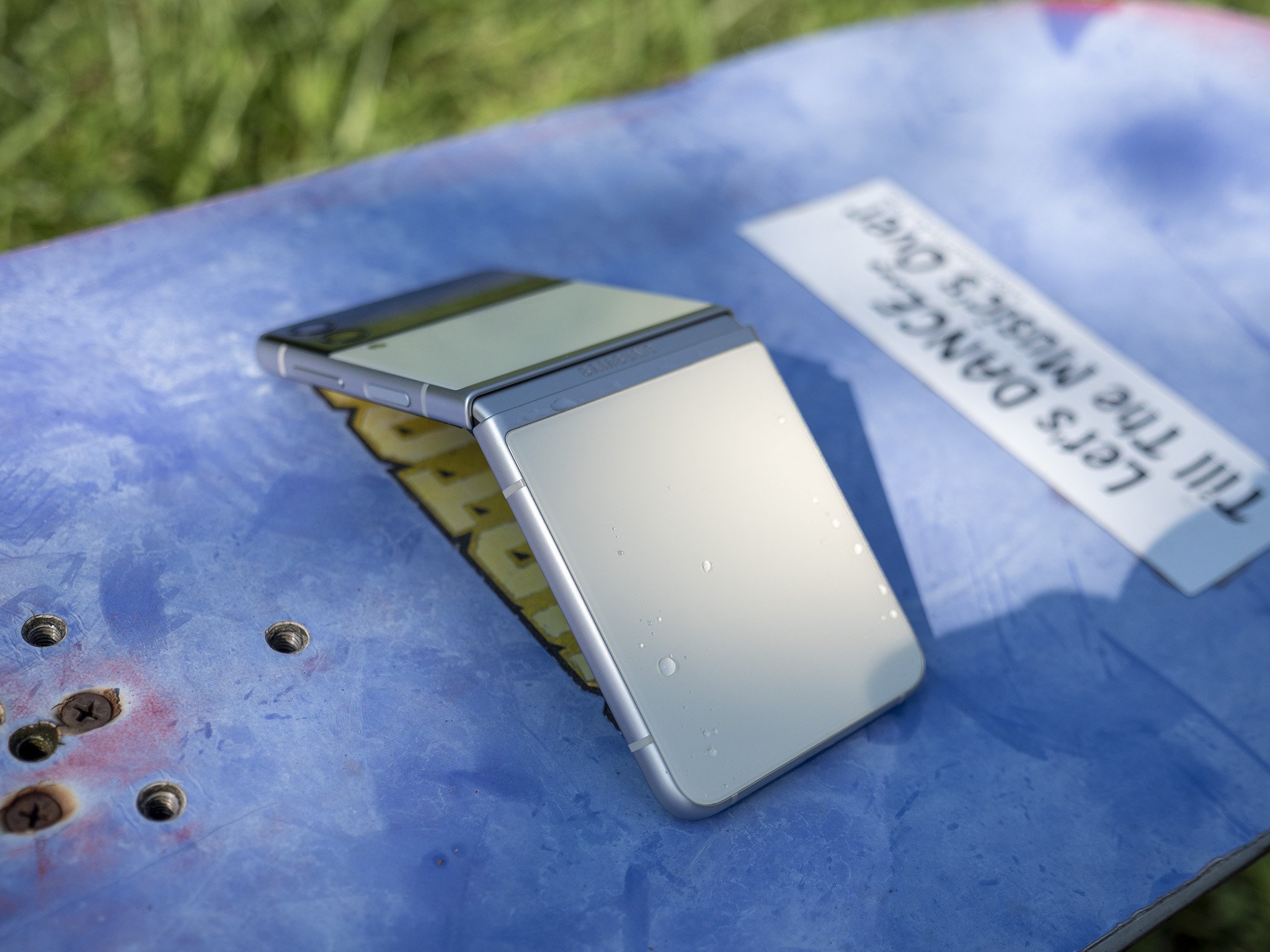
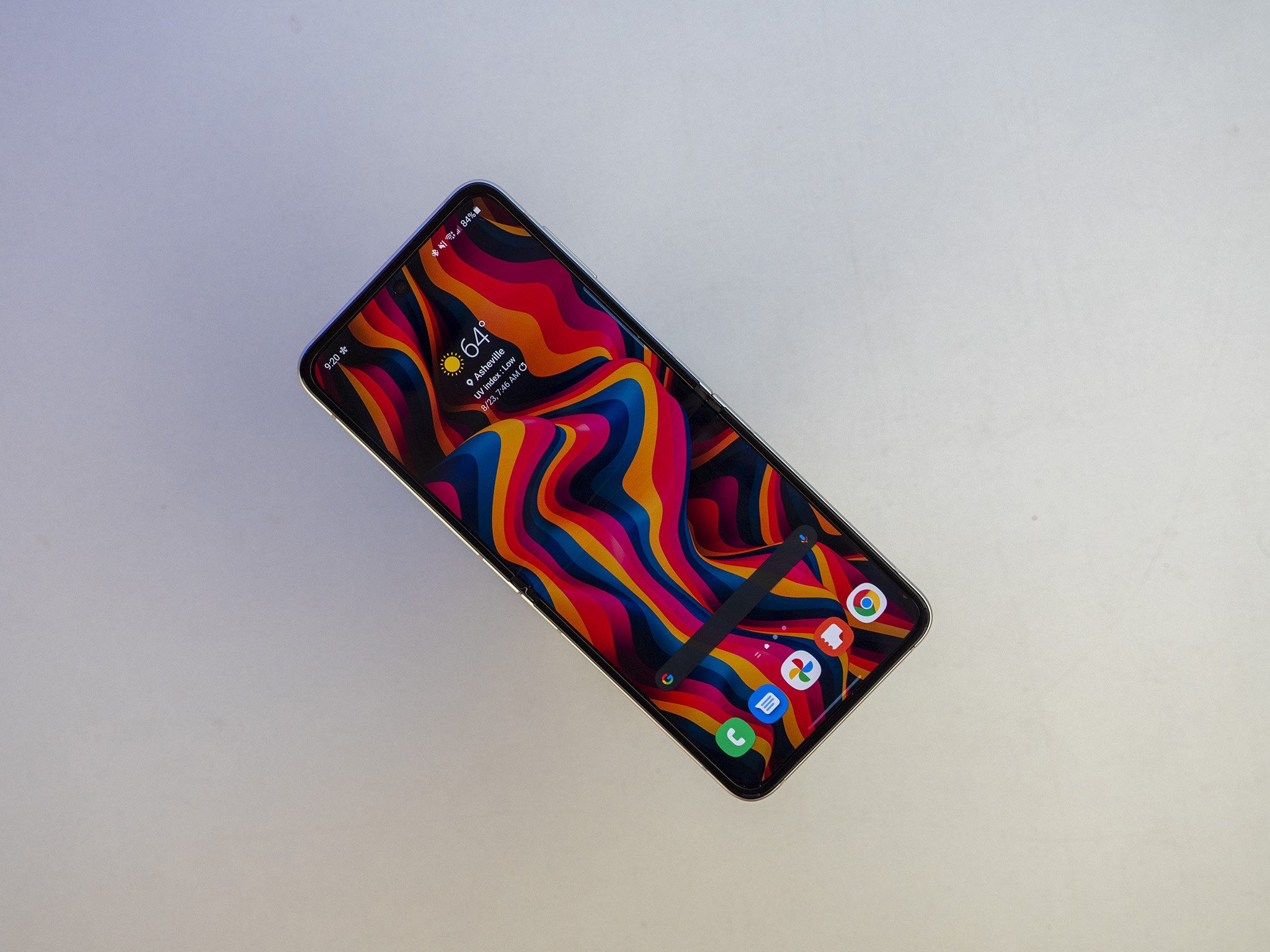
Oddly enough, while Samsung includes little raised bumps on the inside corners to keep the phone closing completely flat, it doesn't have any kind of feet or raised edges on the back. While it's nice to have a phone without a giant camera hump that makes it wobble on a table — here's looking at you Z Fold 3 — this completely flat, shiny back brings back memories of another phone from many a year ago: the Nexus 4.
In short, if you place the Z Flip 3 on a flat surface that's not level, expect it to slowly scoot itself off the edge when you least expect it. Putting a case on it, like one of Samsung's leather cases, fully alleviates this problem.
Flipping the phone open and closed isn't just cathartic, it also makes the device pocketable; a trait not common to modern smartphones.
Stereo speakers are made possible through a combination of a larger earpiece in the top bezel above the display and a standard speaker next to the USB-C port on the bottom of the phone. Those speakers are slightly quieter than the Fold 3 at max volume and don't sound quite as deep, but have less distortion at higher volume. Either way, this is a massive improvement over the single speaker found on the Z Flip 5G.
Galaxy Z Flip 3: Software and performance
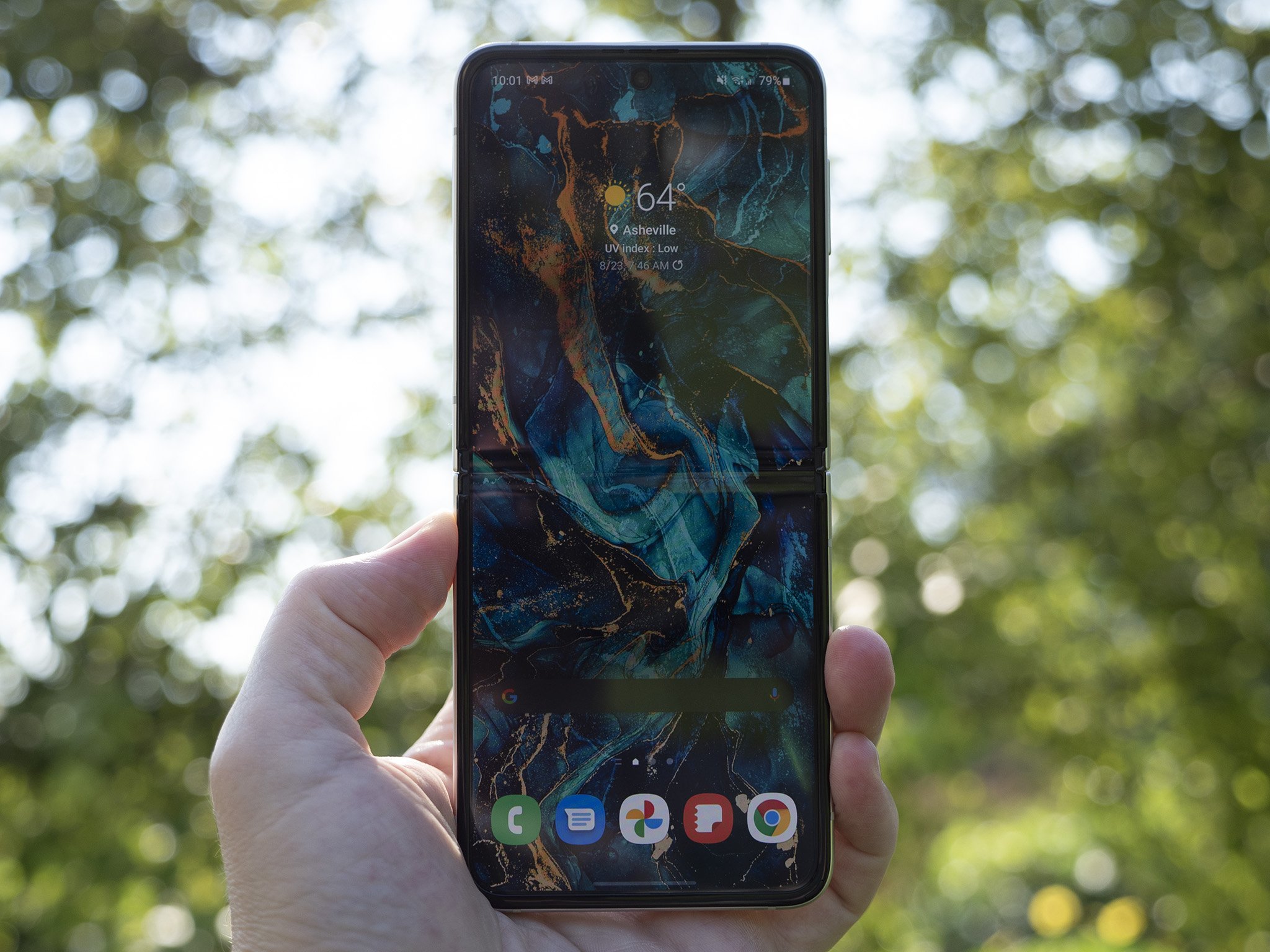
The Galaxy Z Flip 3 launches with OneUI 3.1, which is based on Android 11 and is largely an identical experience to what's found on phones like the Galaxy S21. The biggest differences are wrapped around the concept of a folding phone, namely in a handy feature called Flex Mode.
But Flex Mode — as it's called when you have the hinge at any angle less than full-open 180-degrees — isn't just some way to take silly pictures with the phone. No, it's significantly more useful than that, especially with Samsung's latest software additions. The Z Flip 3 ships with OneUI 3.1, which includes a foldable-specific feature to force apps into Flex Mode when the phone is folded at all.
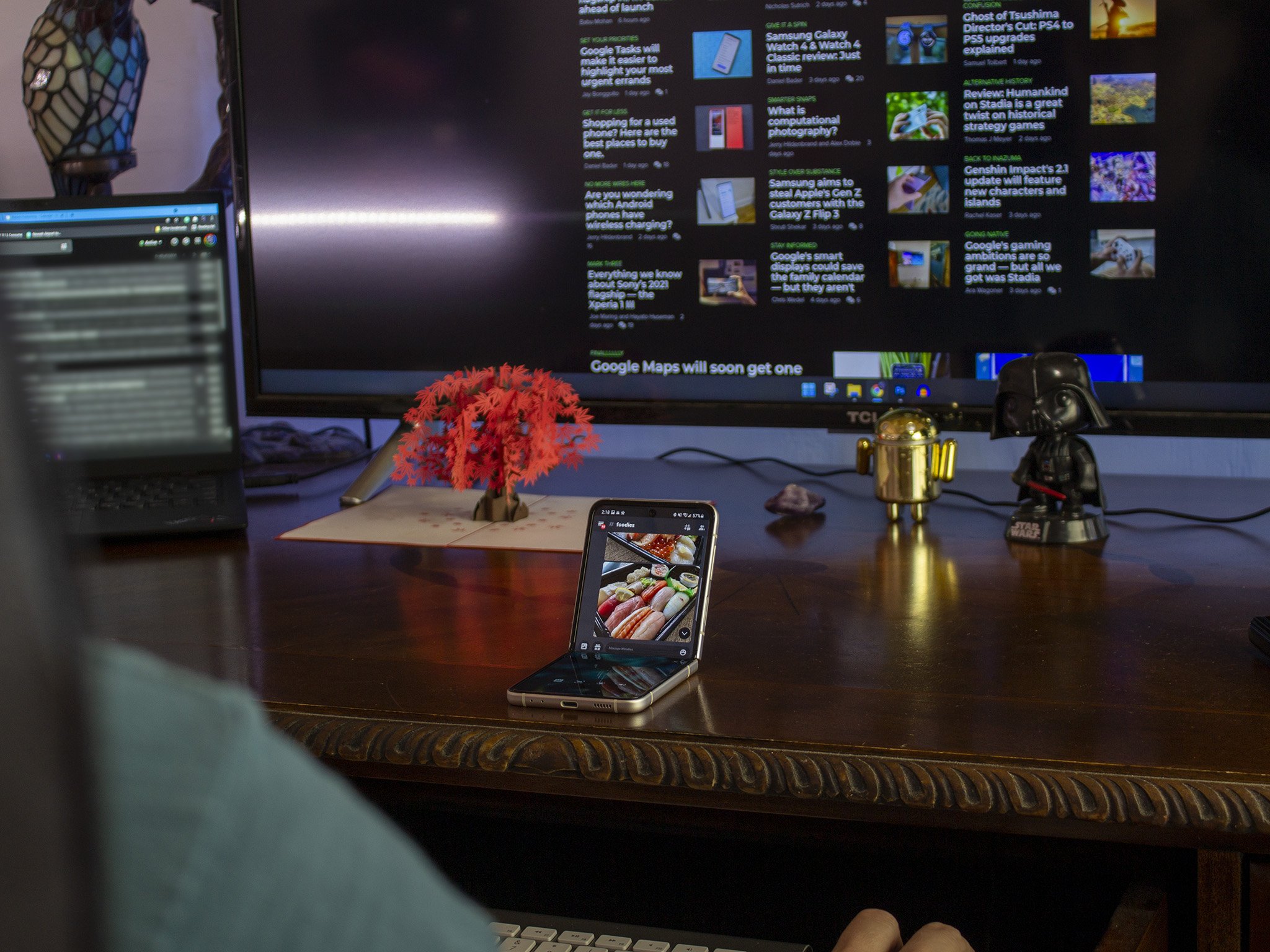
Flex Mode makes it easy to keep up with chats, multitask apps, or just to pick it up from a desk.
Apps running in Flex Mode reside on the top half of the screen and take on a decidedly square aspect ratio. The bottom screen is mostly used for some quick settings like adjusting the brightness but, generally, isn't something you'll use often. One of the best use-case scenarios for the bottom half is the camera, which slides the viewfinder up to the top half of the display and the rest of the controls onto the bottom.
This setting might be buried in Samsung Labs at first, but Samsung was wise enough to schedule a notification that will appear in the first few hours of usage to let you know that this handy feature exists. It's just a shame this isn't a more obvious or prominently featured, well, feature. It's incredibly useful if you regularly find yourself keeping up with chats in apps like Discord, waiting for a text message to come in, or just want to have a video playing at their desk while they work on their computer.
If Flex mode doesn't suit an app well — or if you'd just like to run two apps at once — you can always use Android's standard split-screen view, putting each app into a neat square on each half of the screen. As you might expect, you can always resize apps or rotate the phone to get a different aspect ratio.
Plenty of little quality-of-life features are enabled by default, including the slide-out shortcut tray on the right edge of the phone. You can't pin it like you can on the Fold 3, but the screen space would make that a bit awkward. Given how tall the display is, though, I could imagine a world where Samsung allows users to pin a shortcut row to the bottom of the phone — not unlike what you would find on a desktop PC.

On the outside, the small cover screen can be handy in reducing the friction that comes with having to open a flip phone, but that use is limited. From day-to-day, I found this screen to be most useful for only four things: checking the time, glancing at incoming notifications, controlling media, and toggling between vibrate, silent, and ringer modes. Samsung didn't include a keyboard or any kind of voice reply functionality, so you'll actually have to open the display if you want to reply to anything.
Several widgets can also be put on the display — accessed by swiping to the left from the clock — including timer, alarm, calendar schedule, a step counter, and weather. Unfortunately, I didn't find any of these widgets actually useful in my time with the phone.
The cover display is a huge improvement over last year's model but, ultimately, still limited in usefulness.
Additionally, the front cover display can be used as a camera viewfinder either when the phone is closed or open. Double-clicking the power button is the easiest way to launch the camera with the phone closed, but I found the display is more awkward for this feature than I would have liked. Despite what you might imagine, the problem isn't the size of the display; it's the aspect ratio.
No matter which way you hold the phone, the narrow display is going to cut off a significant portion of the image. While the display wasn't unusable for this function, its difficulty meant that I never chose it for taking a picture other than to test its functionality. I do like that you can swipe left and right to swap between photo and video modes, while swiping up and down swaps between the ultra-wide and regular cameras.
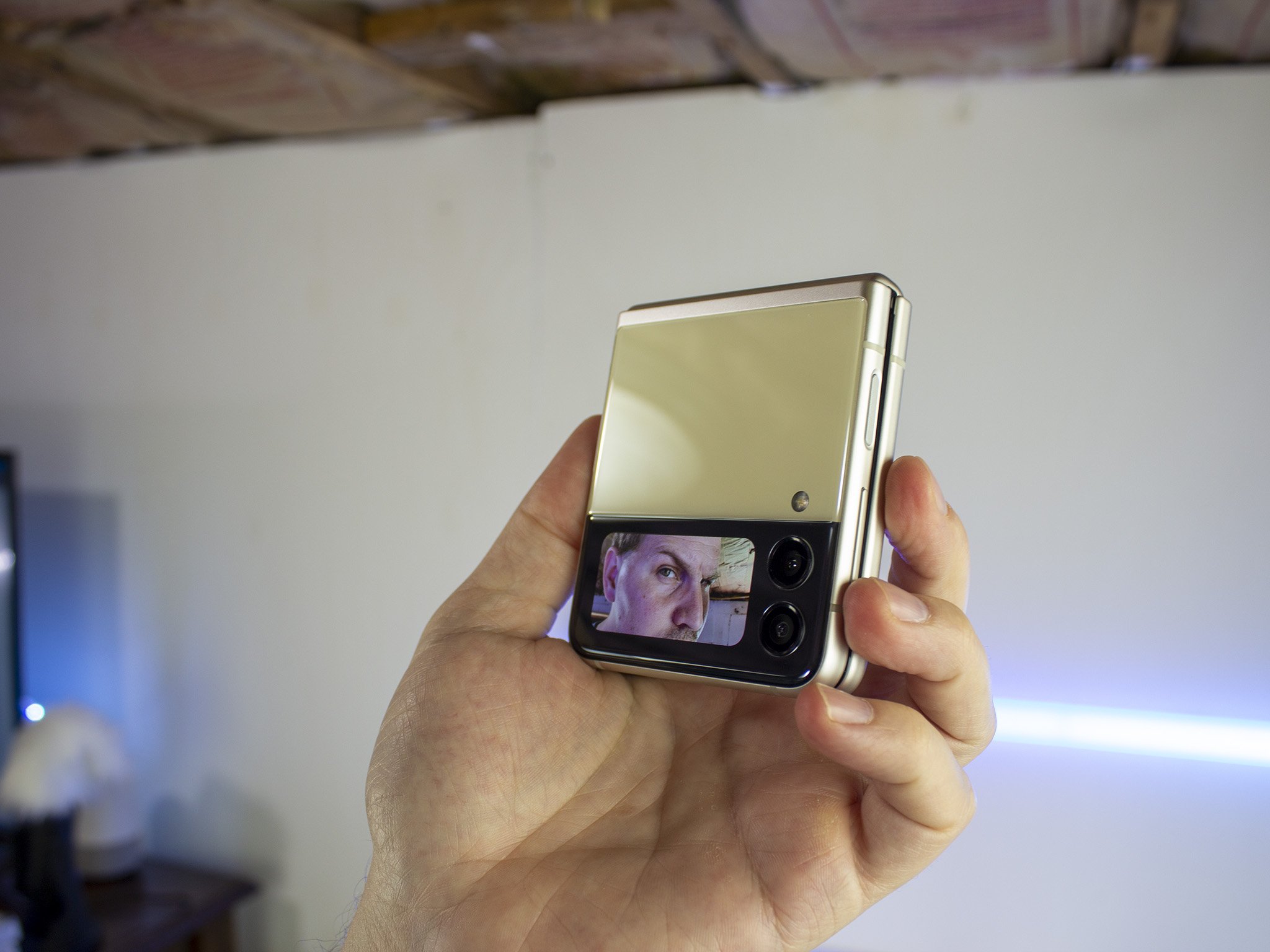

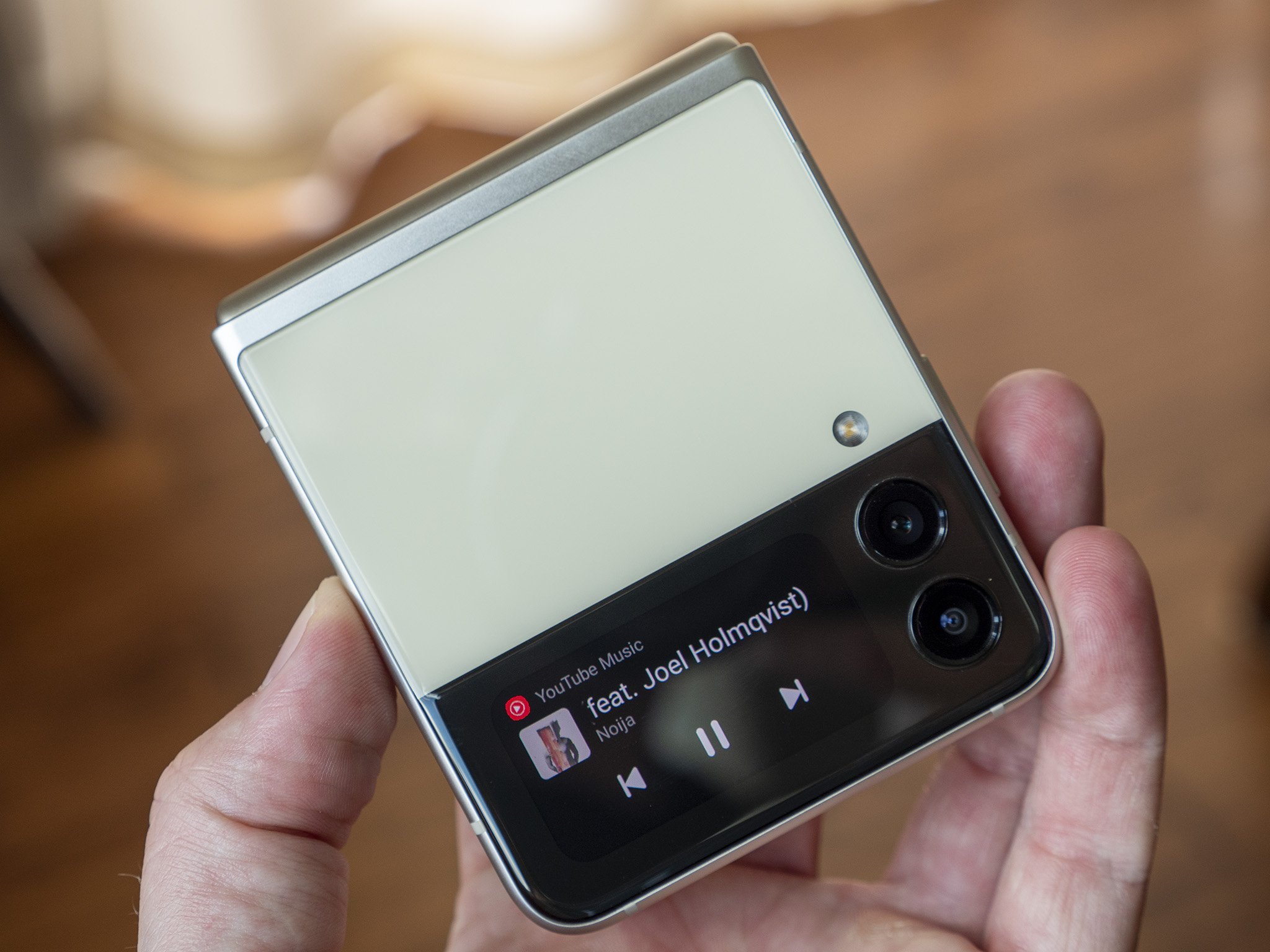
As you might expect from a top-tier Samsung flagship device, the Z Flip 3 performs admirably in any situation. I never experienced any lag, stuttering, or even hesitation when launching apps or running demanding apps. The new 120Hz refresh rate on the inside screen means it'll look as fast and smooth as it feels, delivering yet another substantial improvement over the Z Flip 5G. There's no downplaying just how fantastic 120Hz feels, although you can always drop the refresh rate if battery life becomes a concern.
Galaxy Z Flip 3: Battery
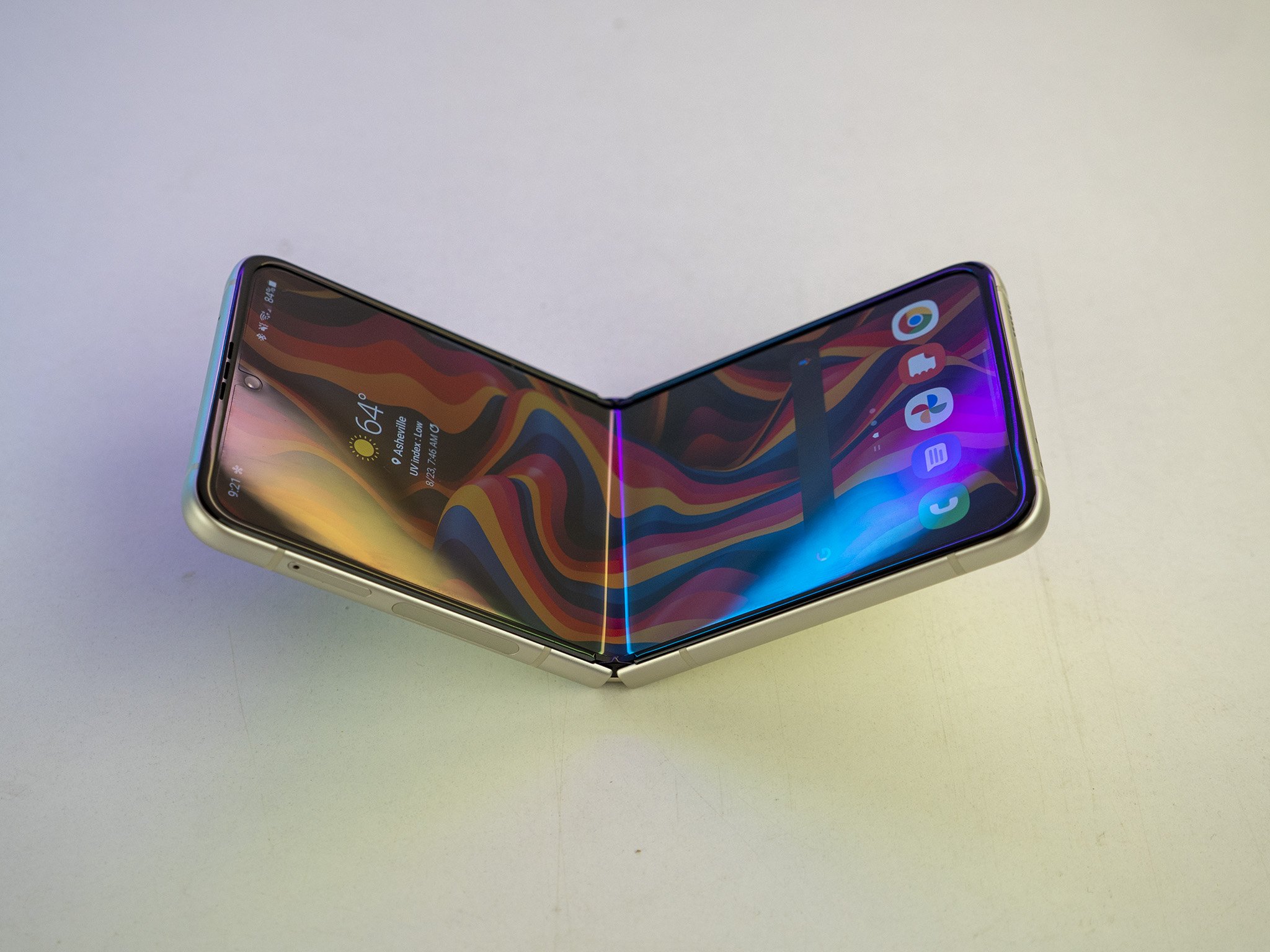
I've seen several reports on battery life for the Z Flip 3 already, but all of them seem to agree on one thing: the Z Flip 3's battery life isn't the best. In a way, the Z Fold 3 was similar in this respect. At 3,300mAh, the battery in the Z Flip 3 isn't small, but it's not particularly large, either. Comparatively, the Galaxy S21 has a 4,000mAh battery, while battery life-focused phones like the Pixel 5a up that to 4,680mAh.
For me, the 3,300mAh battery inside the Z Flip 3 was plenty to get through a day without worry. While working, I have music playing over my Bluetooth speakers all day long and regularly use the phone to chat with friends, take photos, and browse social media. Despite all that, I'm not someone who tends to be able to reach more than 3-4 hours of screen on time with any device, no matter what I'm doing or using.
The battery is just fine for average use, but power users will have problems, especially with the slower 15W charging speed.
If you're someone who regularly uses your phone for long periods all throughout the day, there's little doubt you'll run into times where you need a top-up to make it to the end of the day. The worst part about that is that the Flip 3 only supports a maximum of 15W wired charging, which means somewhere in the realm of 2 hours to fully charge that battery from 0-100%.
Galaxy Z Flip 3: Cameras
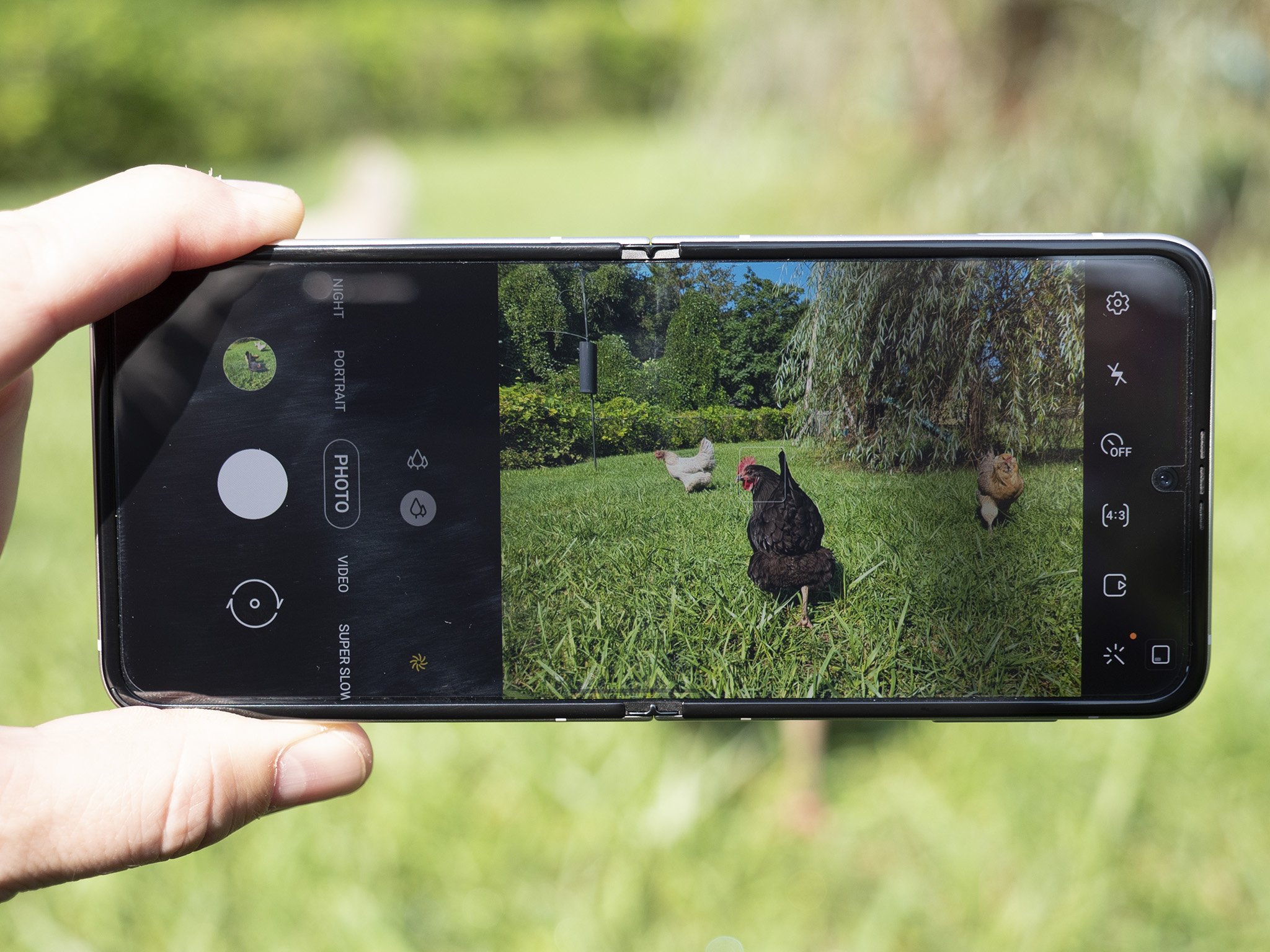
Samsung made all the wrong headlines when the Flip 3 and Fold 3 were announced to have essentially no camera hardware upgrades from the previous generation of Samsung foldables. While those cameras weren't bad, they certainly weren't good in most situations and, in the case of the Flip 5G, the last of a telephoto lens meant zooming into scenes was always going to be at least a little bit blurry.
Without a telephoto lens, zooming in more than 2-3x results in a very unattractive image.
But Samsung was able to pull off some serious magic on the Flip 3 thanks to a pretty magnificent software upgrade, taking "old" camera hardware and making it feel brand new again. We've seen this time and time again with Google's phones — which have essentially used the same camera sensors since 2015 — yet the software experience outshines everyone's hardware prowess. It's a mantra that goes something like "work smarter, not harder", and Samsung is definitely on board.
Let's get the bad out of the way first. With no telephoto lens of any kind, zoom detail is pretty bad. Zooming further in than 2x is going to result in a very undetailed image, despite the fact that the viewfinder has quick buttons for zooming in up to 10x. If you really need to zoom in that far, it's certainly possible, but you're never going to get a good photo or video from it.
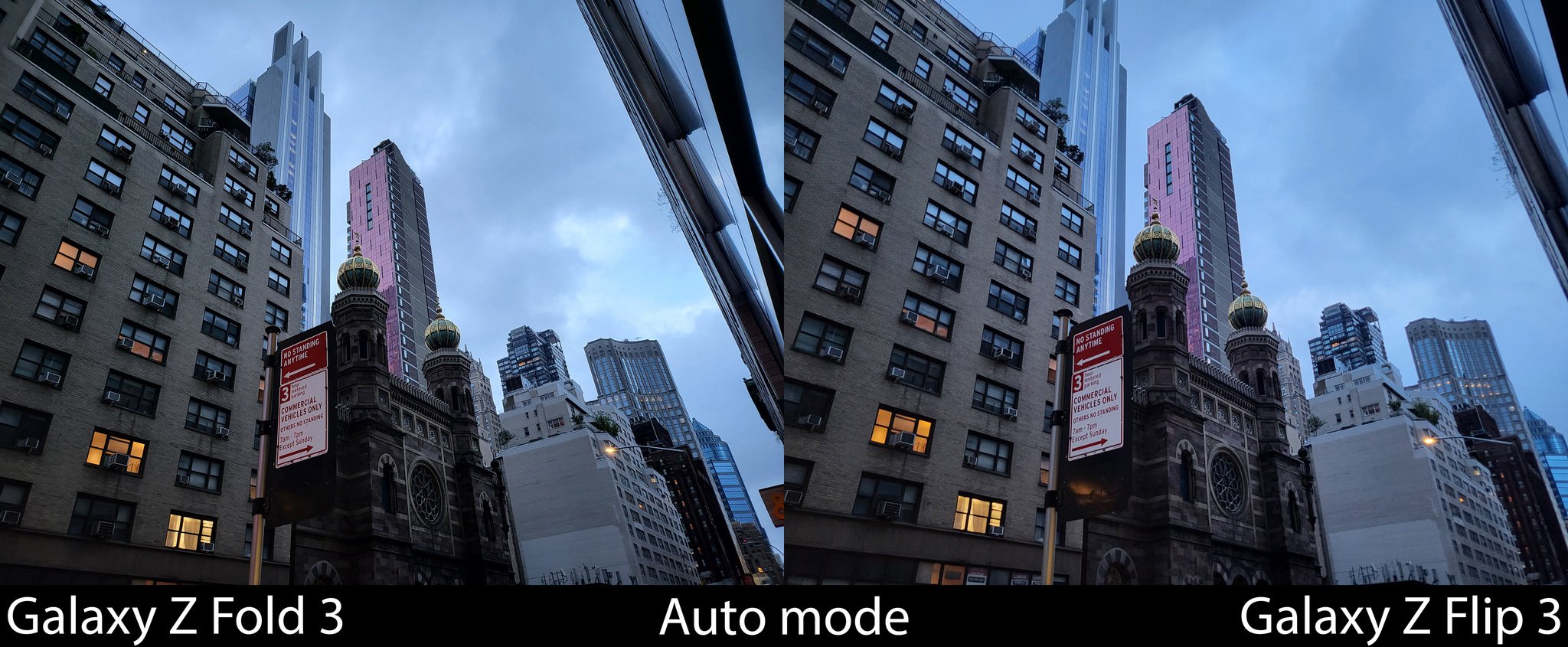
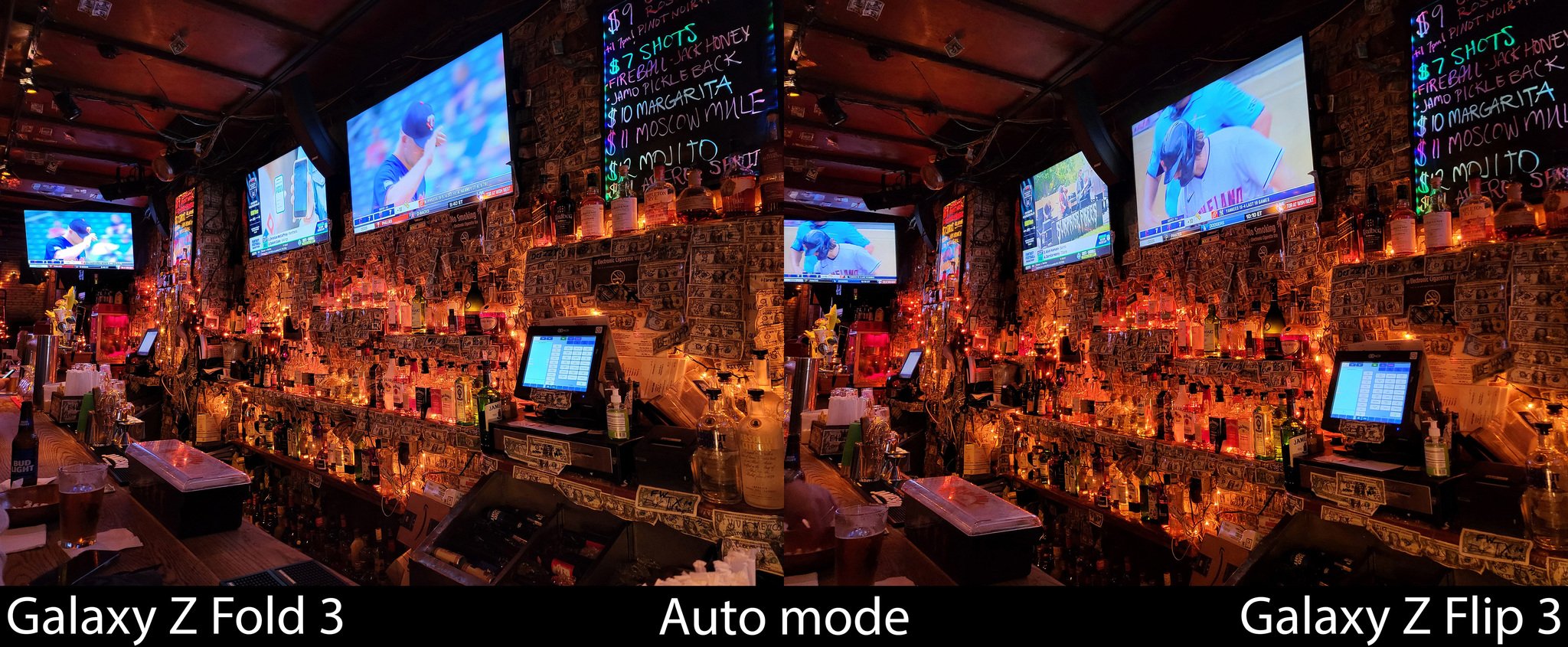

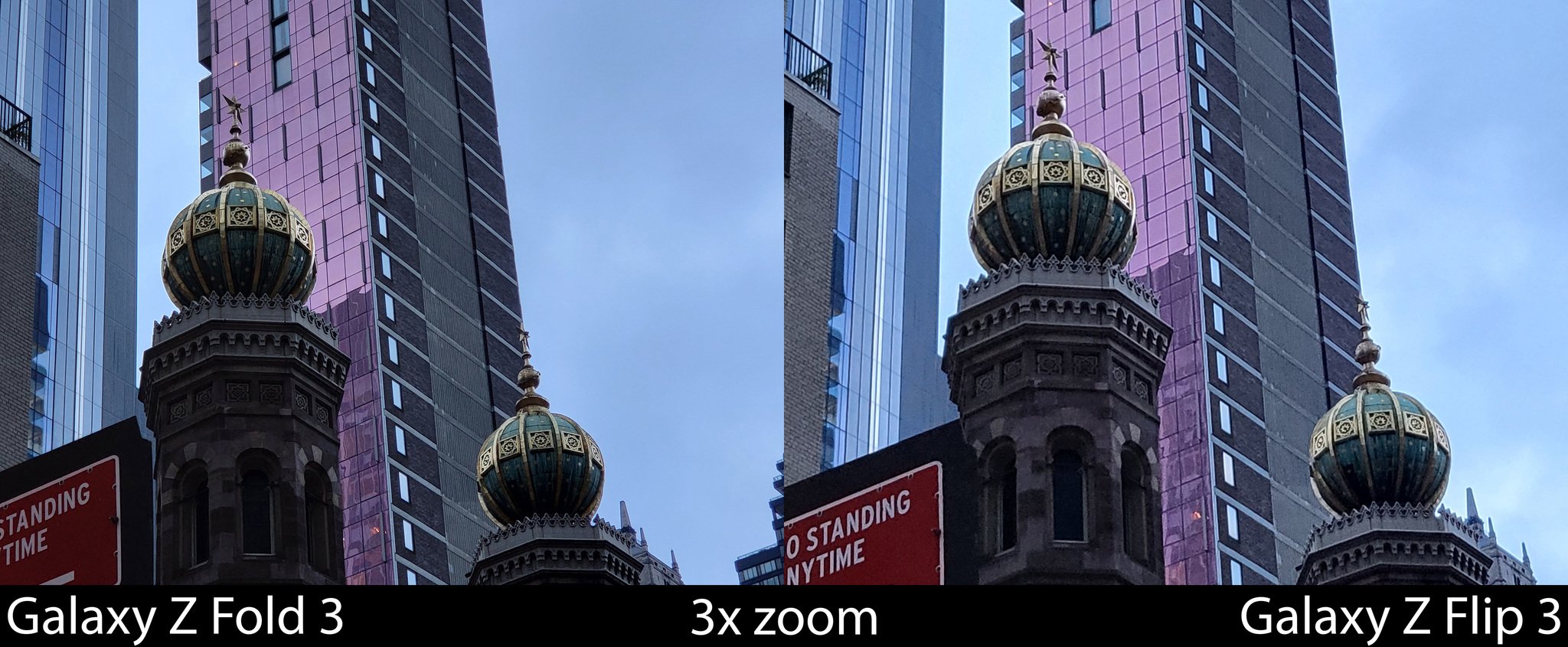
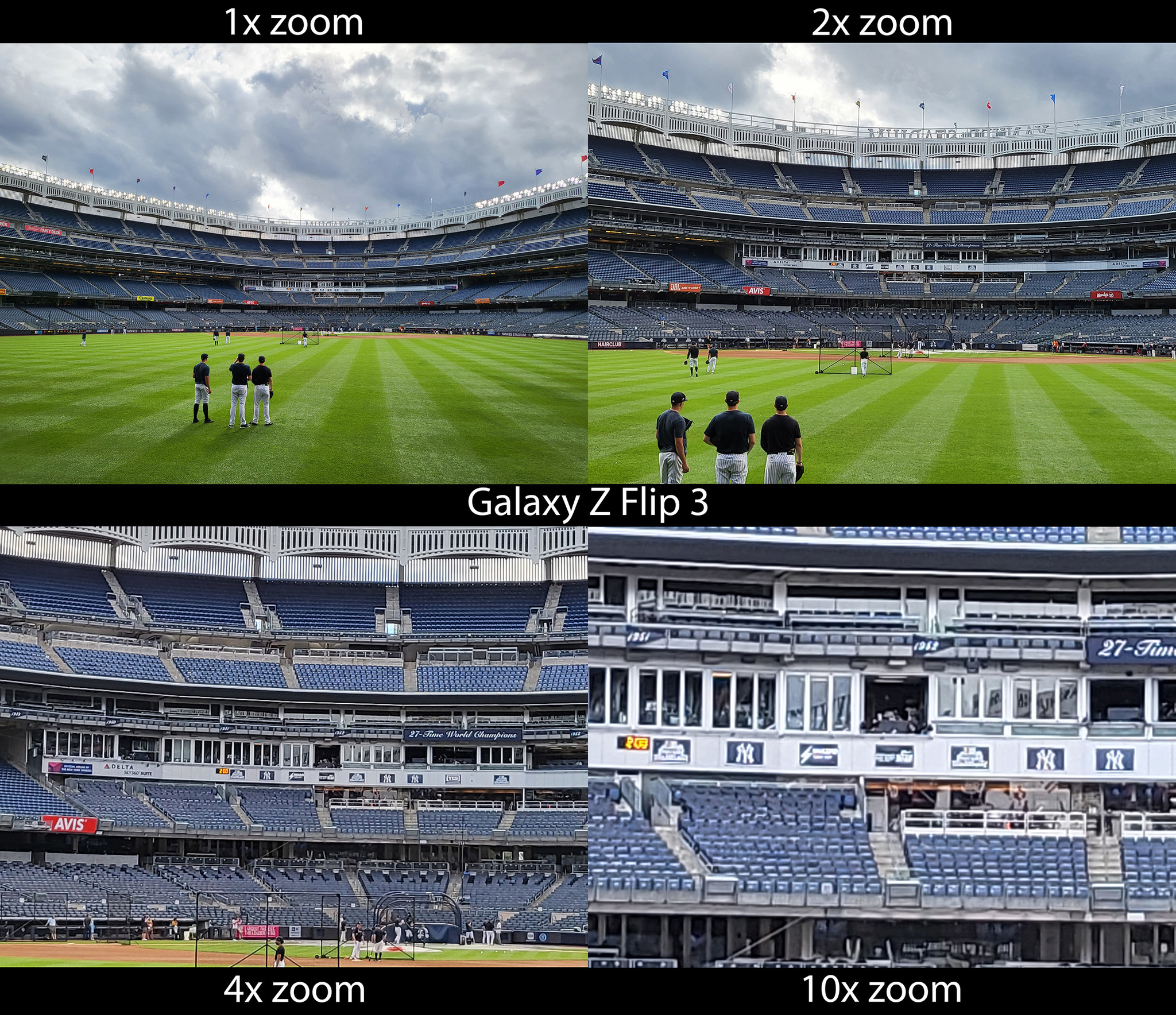
The camera is unparalleled in its execution on a more consistent basis than I can ever recall seeing from a Samsung phone before the Galaxy S21.
Likewise, the inside front-facing camera struggles with movement in any lighting less intense than broad daylight. I'm not entirely sure why Samsung continues to prioritize low ISO the way it does in these situations, but it results in blurry photos because the shutter needs to stay open longer, resulting in blurry objects if they move.
In my testing, it seems like ISO 640 is what the front-facing camera tops out at in most situations, which is pretty silly. When things get really dark, it at least ramps that up to a maximum of ISO 3200, but I think it needs to be a bit more aggressive when movement is detected.
Outside of those two situations, the camera is unparalleled in its execution on a more consistent basis than I can ever recall seeing from a Samsung phone before the Galaxy S21. Many of the Pixel's best camera traits — things like multi-frame capture, automatic image replacement, automatic night mode, and toast notifications to suggest using a better dedicated camera mode — are now built into Samsung's software and work incredibly well in every situation I tested them in.
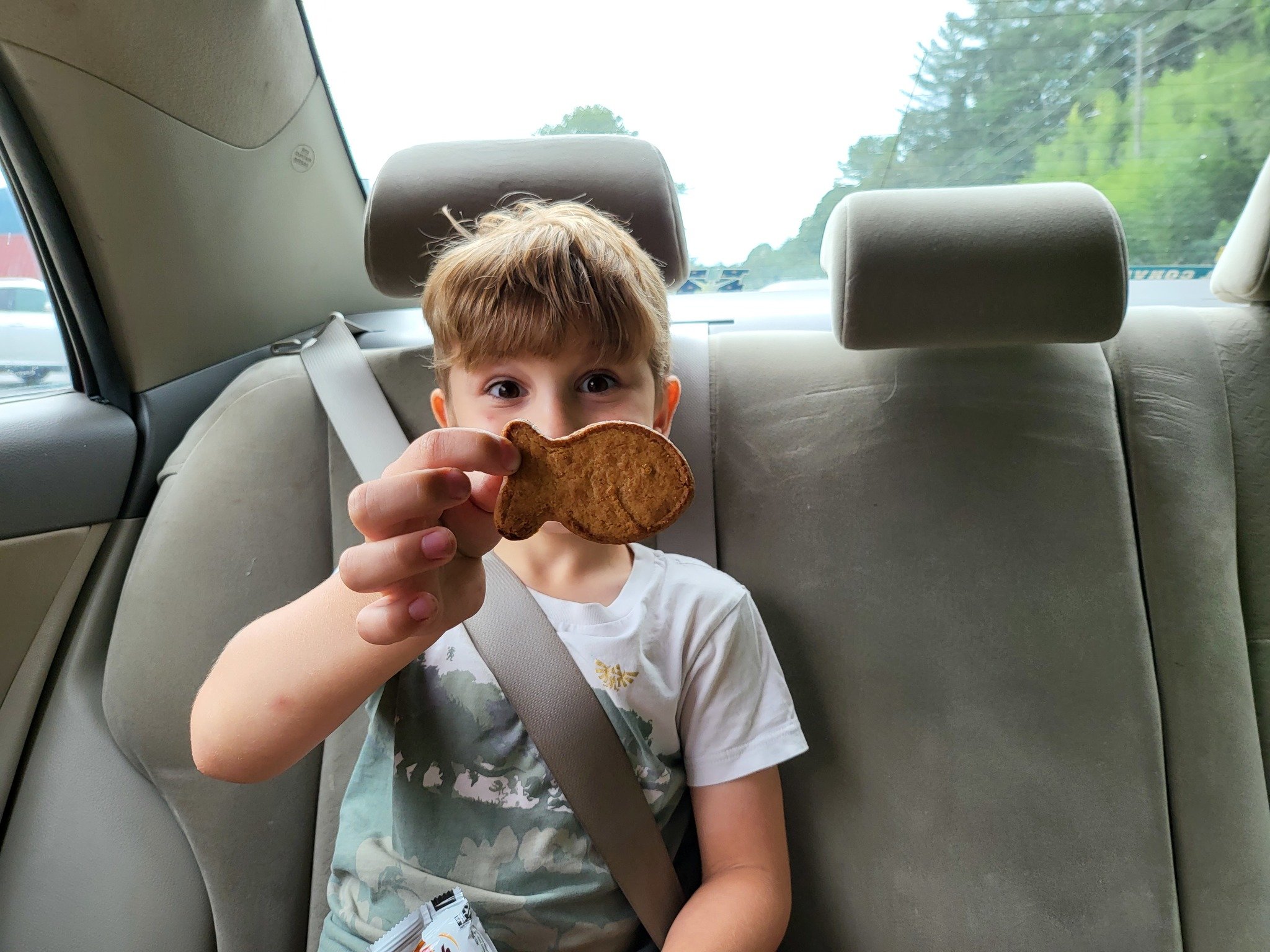
One example of excellent automatic image replacement took place after I got in the car from the airport. We picked up lunch and my son was showing me the ridiculously large graham cracker Goldfish he got. While I snapped the shutter a second too early to get the shot just how I wanted it, Samsung's camera software was smart enough to realize that I was trying to line up his eyes with the top of the fish. As I clicked into the gallery to see the picture, I saw it get replaced with the image I wanted; an image that was taken after I touched the shutter button and the post-processing work began.
Samsung's camera software was smart enough to realize that I took the shot too early and automatically replaced it with a better one.
Likewise, you'll find that night mode gets automatically enabled when detected conditions fall below certain light level thresholds. The result is a feeling of reliability that I've not seen in previous versions of Samsung phones, as night mode was enabled exactly when it was needed, with clear indicators on the viewfinder to hold the camera still for a few seconds while the phone took the number of photos needed to make the final result beautiful.


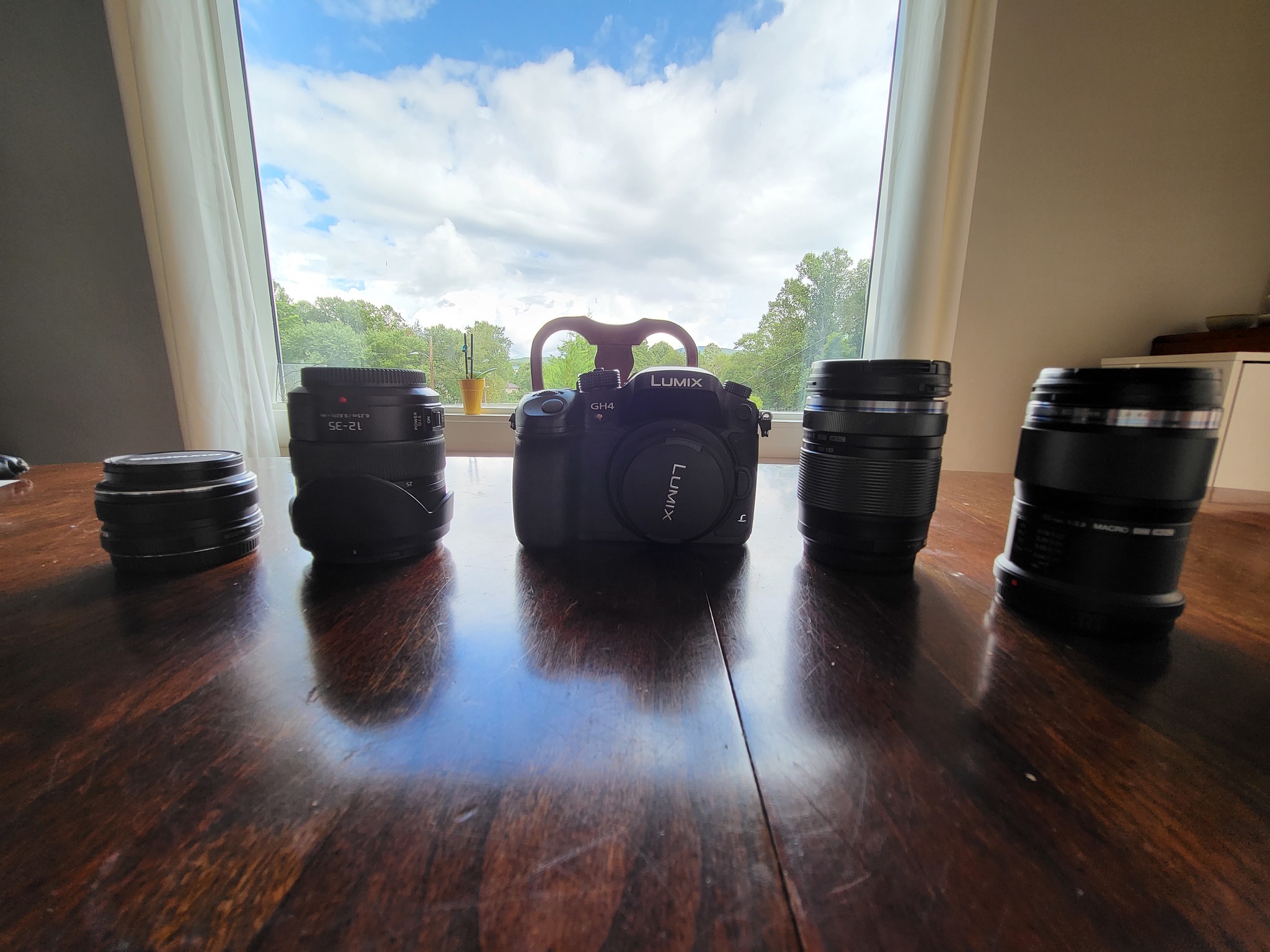



Portrait mode is just gorgeous and doesn't seem to suffer from the harsh edge calculations of other phones.
I also really, really love portrait mode on this device. Many times, phones look for objects and apply a harsh blur around those objects in order to mimic a very shallow depth of field that some SLR camera lenses have. The result is sometimes beautiful but oftentimes inaccurate, resulting in missed edges that stick out like a sore thumb. Samsung's method is much softer than that, eschewing those harsh lines for much more subtle ones, resulting in images that don't often have those incorrect edge calculations.
Like the Z Fold 3, video recording quality tops out at 4K resolution at 60FPS, while super slow-mo video runs at a maximum of 960FPS at 720p resolution. Both of these have been pretty standard fare for Samsung phones for a few generations now, and all of them perform as well as consumers have come to expect. Samsung excels at video quality and has for a long time; the Z Flip 3 is no exception to that rule.
Just as you'll find with the photo experience, the Galaxy S21 series still allows for even higher quality 8K video recording, if that's something you really need. While 8K recording likely isn't something on most people's list of things to care much about, it's still a notable spec improvement that you won't find on the Flip 3.
Galaxy Z Flip 3: Competition
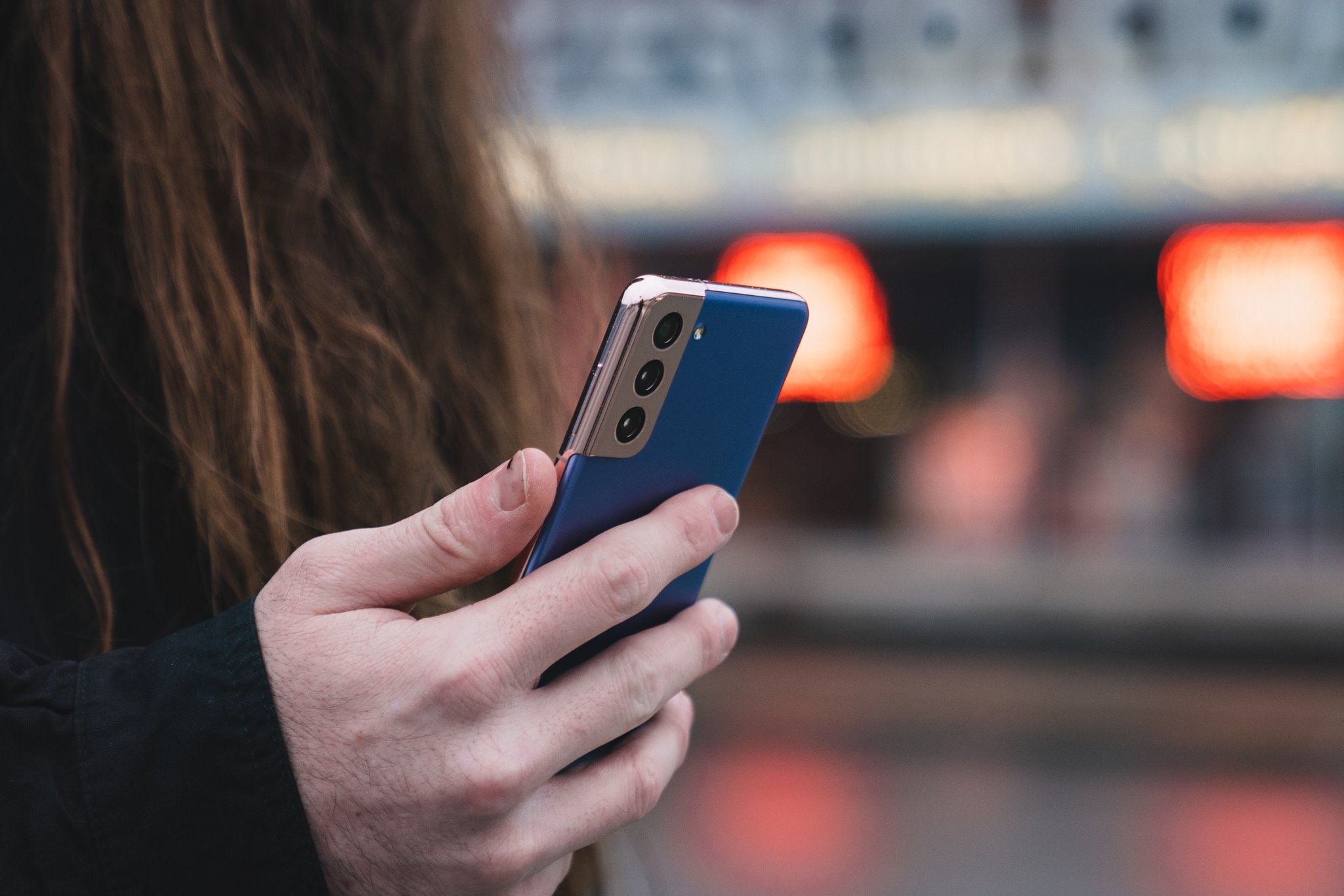
When it comes to foldable phones, Samsung tends to stand alone in the field. Motorola might have refreshed the RAZR with a 5G model last year but, ultimately, it doesn't seem like a much better option than last year's Galaxy Z Flip 5G. Aside from last year's specs, both of these phones were quite a bit more expensive, have worse cameras and aren't water-resistant at all. If you just want a clamshell foldable and aren't worried too much about these features, you might be able to score a second-hand one for a good deal and get your flip on, but it's a tough sell when compared to the Z Flip 3 until the Motorola RAZR 2 comes along.
Samsung's other 2021 foldable, the Galaxy Z Fold 3, is the bigger brother of the Z Flip 3 and the price very much reflects that. If big phones aren't your thing, the Z Fold 3 isn't the phone for you. If a larger foldable intrigues you, however, you'll get a bigger battery, bigger screens, S Pen capability, and a telephoto camera on the back for better camera zoom. It's still no Galaxy S21 in terms of camera prowess, but there's a slight improvement to note when compared to the Flip 3.
If you just want an incredible Samsung phone with some of the best cameras on any phone, the Galaxy S21 Ultra can be had for the same price as the Z Flip 3 these days and offers a substantially upgraded camera experience. You won't be able to fold the phone closed, but it does feature support for the S Pen, which is always an added bonus.
Galaxy Z Flip 3: Should you buy it?
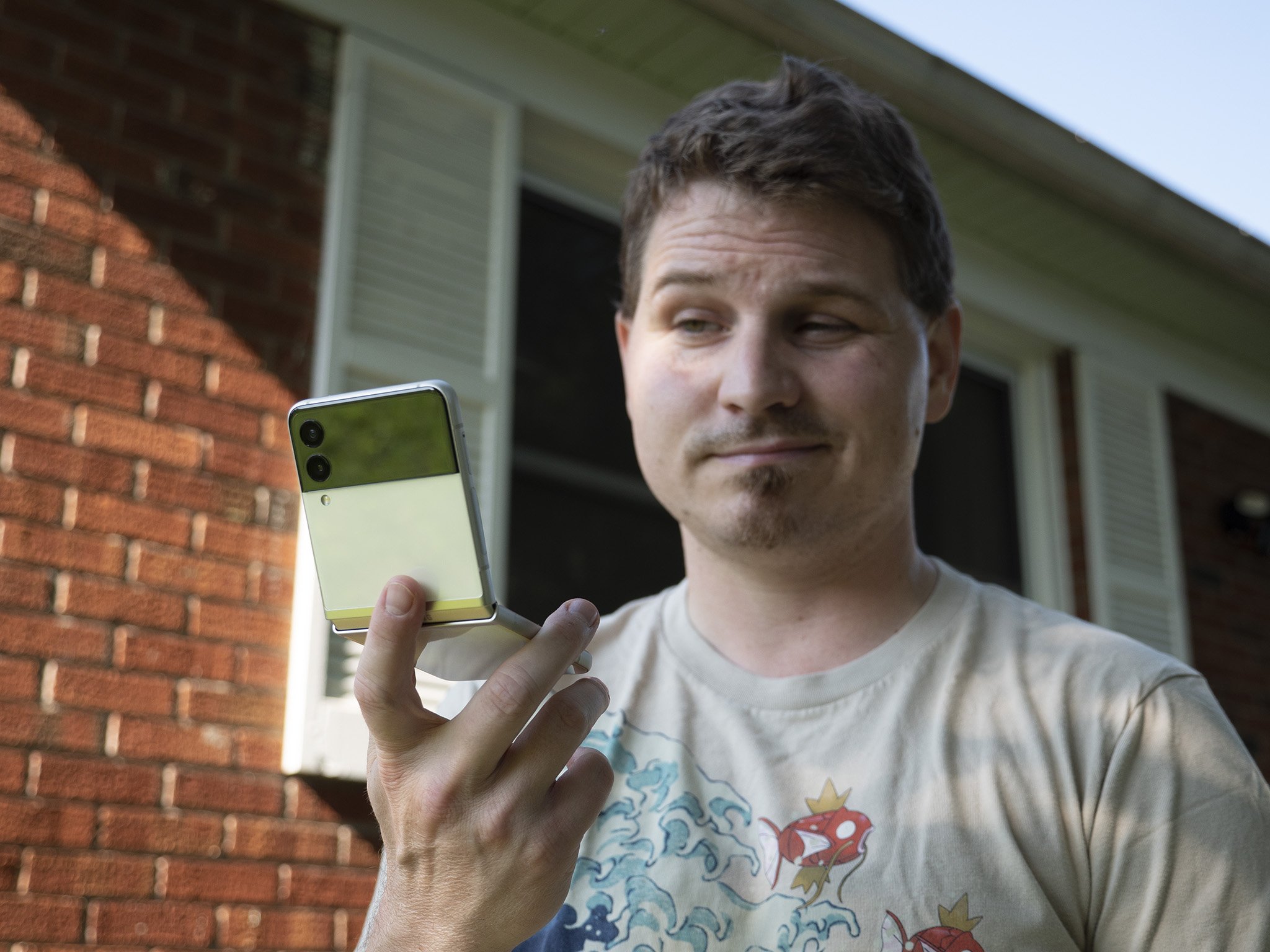
You should buy this if ...
You want a flip phone again
There's no denying the nostalgia factor that comes with flip phones. Many of us grew up with them or used them extensively in the past and loved how useful the hinge was. Now you can get that form factor you love without sacrificing the modern smartphone experience.
You want a cutting-edge phone
The Galaxy Z Flip 3 is a cutting-edge device in every use of the term. From great cameras to fast performance, a unique form factor, and even water resistance, the Z Flip 3 is a phone that feels every bit worth its $999 price tag.
You're tired of the same old, same old
The Z Flip 3 recreates the modern smartphone experience in several ways without feeling completely alien. It's more than just a fresh coat of paint; it's an entire paradigm shift into how a phone looks and is used. It'll turn heads and keep you in awe for some time as you fold and unfold that beautiful display.
You should not buy this if ...
You need epic battery life
I had no problem getting through a full day's use with the Z Flip 3, but power users will struggle to achieve that goal. Couple the average battery size with sub-average charging speed and you could very well get frustrated with the Z Flip 3 for the worst reasons.
You need the best cameras
Samsung has done a lot to improve its camera software but, ultimately, the camera hardware on the Z Flip 3 is limited. While phones like the Galaxy S21 Ultra are pushing 100x zoom and 108MP sensors, the Z Flip 3 still uses a few 10MP and 12MP sensors with no optical zoom. They're not bad, but they're definitely not the best.
You live that beach life
The Galaxy Z Flip 3 improved almost every area of the hardware when compared to the Z Flip 5G, but it didn't add dust ingress protection at all. That means it's physically dangerous for the phone's health to be hanging around at the beach or anywhere that sand and dirt are liable to get poured onto (and into) your phone. Maybe a few cases will help with this but, ultimately, the phone isn't great for these scenarios.
It's amazing to think just how quickly foldables have matured. From what was very obviously a beta product just two years ago to the masterful craft that's gone into making the Z Flip 3, foldables are here and easily recommendable for just about anyone. Aside from just looking cool, the Z Flip 3 is a foldable that actually fits in your pocket, eschewing the giant phone trend of the past few years. It also goes against the grain by offering not just a small phone, but one with cutting-edge specs that makes almost no compromises, all for a great price.
That $999 price tag finally means it's accessible to many more people than ever before, and deals from the carriers and Samsung themselves mean you can get a Z Flip 3 for just a few hundred bucks if you're willing to sign a contract or trade in your old phones. Folks who find themselves regularly zooming in with their phones might want to consider another phone, and power users probably should look elsewhere if they don't want to be driven crazy by battery life concerns. If you don't fit into either of those categories — and you don't live at the beach — the Z Flip 3 is an amazing, unique alternative to this year's best flagships in every other way.
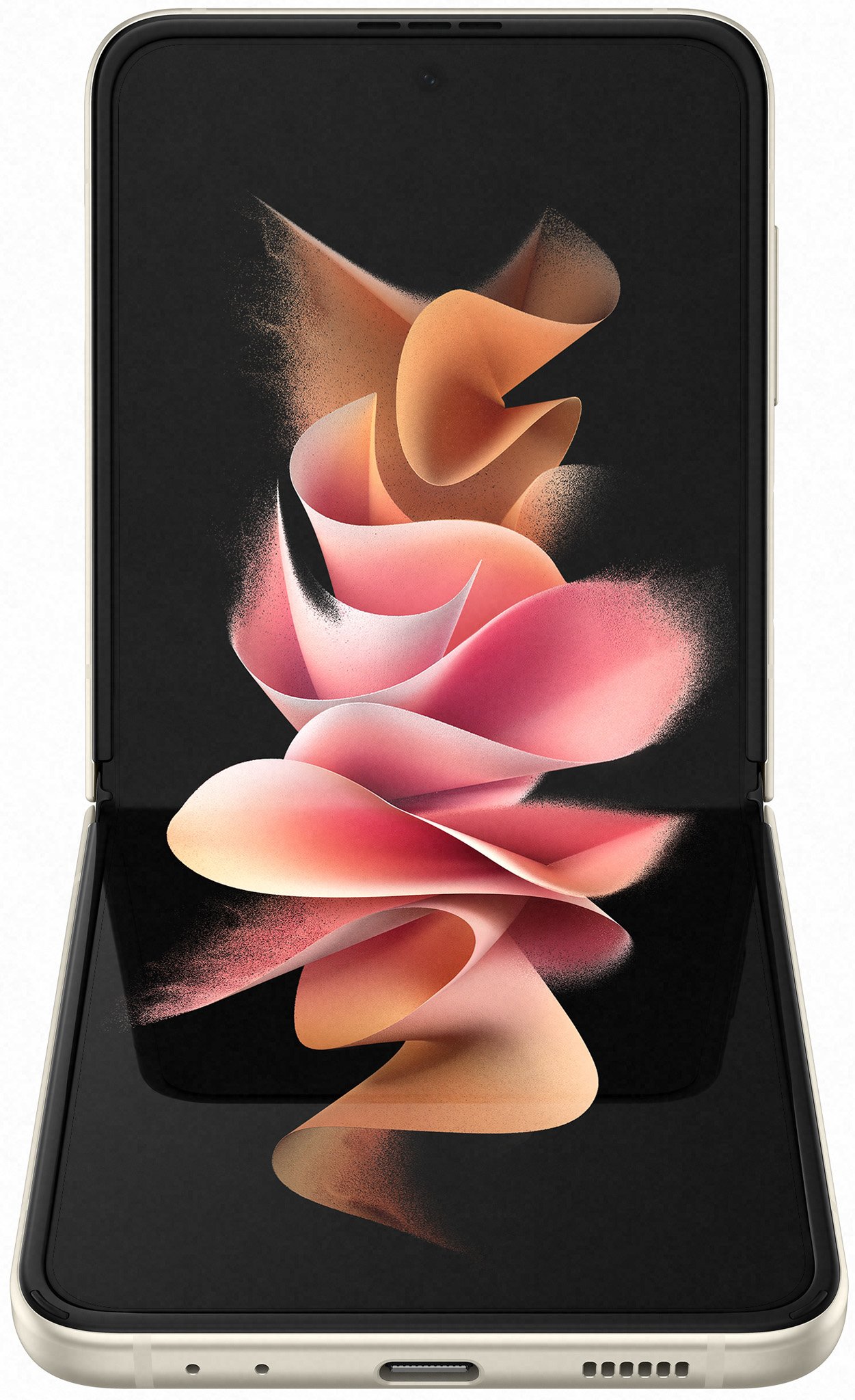
Bottom line: Foldables are finally as good as their flagship counterparts in most ways, and the Flip 3 offers a unique form factor and experience that a standard smartphone simply cannot. Durable hardware, water-resistance, and reliable cameras pair well with a gorgeous display, blazing performance, and surprisingly great battery life.
Samsung Galaxy Z Flip 3: 8 months later review
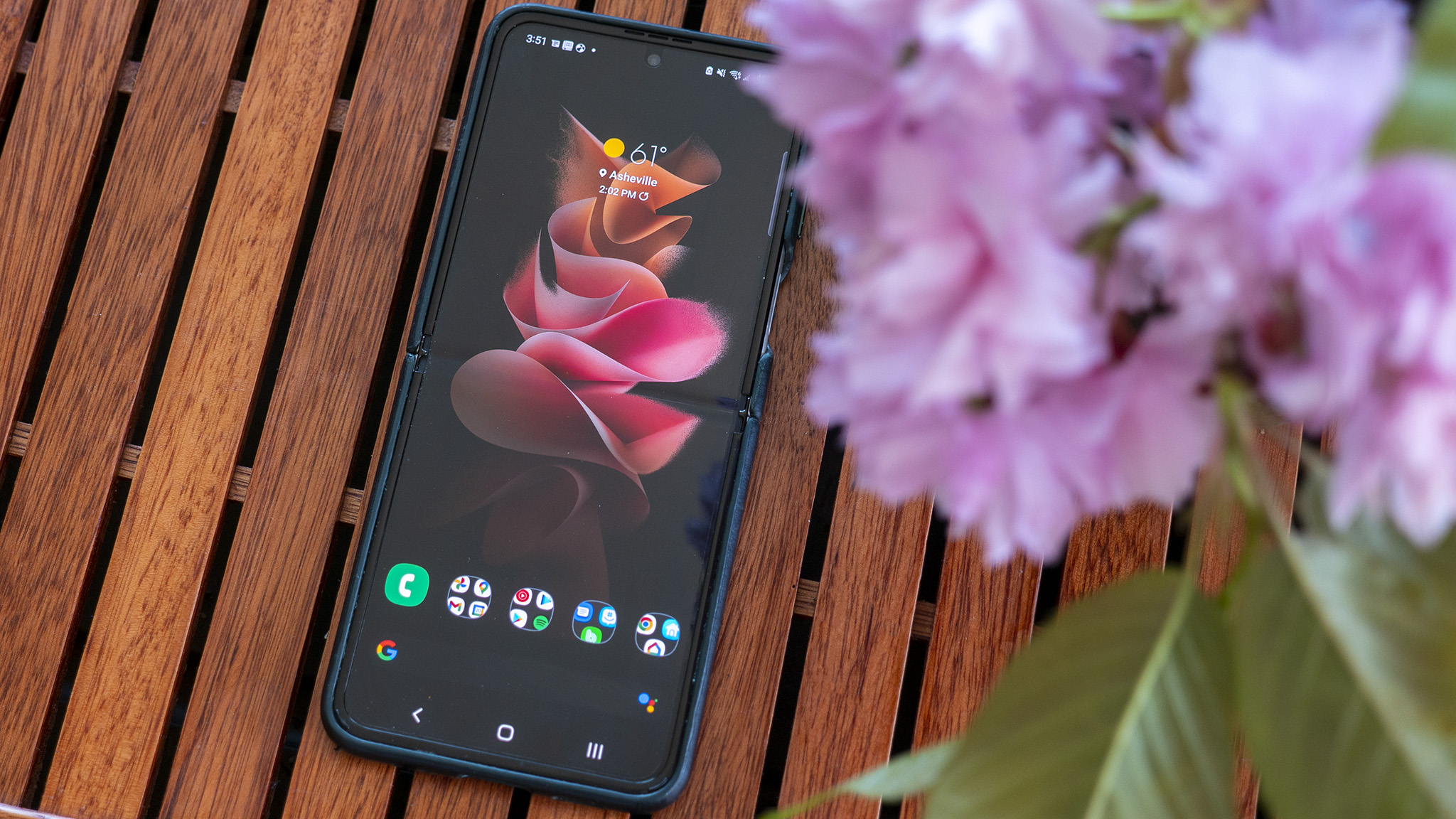
Of all the phones Samsung launched in 2021, few were more exciting than the Galaxy Z Flip 3. The phone had the most promise of becoming mainstream because of its form factor, which makes a large screen easy to pocket. Indeed, the Z Flip 3 did begin to reach that goal as it’s the fourth-fastest selling phone in Samsung’s history, according to Counterpoint research.
Along with those sales came quick software updates, first to One UI 4 and Android 12 in early December, then later with the One UI 4.1 update just one month after it launched on the Galaxy S22. The rapidity with which Samsung is able to keep its enormous range of smartphones updated is nothing short of impressive, even including more niche foldable phones.
But Samsung has released few Flip-exclusive features since launch. A notable exemption to this is the cover screen launcher that was added to Samsung’s Good Lock utility in late February. The launcher is certainly cool and allows full apps to be run on the outer screen.
That’s one of the things we wanted to see added to the Flip 3 given the screen could be large enough for some tasks. The only problem with the current implementation of the concept is that most apps won’t scale nicely to this screen. Sure, the aspect ratio is just fine — and is basically a teeny tiny smartphone display in shape — but it’s so small most apps are fairly useless on it.
After finally getting the ability to use the cover screen more, I think it’s best to leave it to only a very small subset of bespoke apps. For the most part, it’s really not worth using that way and is best kept for notifications and other quick actions like setting a timer or taking a photo.
But software features were never my biggest concern with the phone. Those were great from the get-go at launch and anything new is merely the cherry on top of an already amazing experience. No, I was most worried about the long-term durability of the phone after opening and closing it — and probably dropping it every so often — over the past few months.
Thankfully, I’ve yet to see any sort of damage anywhere on this phone. My wife has been using it daily since it came out in August 2021 and has kept the Samsung leather case on it the whole time. I know for a fact the phone has fallen out of a bag or off the table more than once and, yet, it looks as good as the day she got it. No cracked glass, no nasty dents or pockmarks in the display, and no sign of the glass in the hinge showing wear and tear at all, either.
So far, the Z Flip 3 is an excellent phone that holds up as well today as it did the day I first reviewed it. The battery life could certainly be better, but it’s not terrible and the overall convenience of the experience certainly makes up for it, especially for folks looking for a small phone that’ll actually fit comfortably in a pocket or bag.
Review Changelog
This article was originally published in August 2021. It was updated in November 2021 with the following changes:
- Updated price and availability to reflect the availability of the Bespoke Edition.
The April 2022 update included:
- Added 8 months later review.

